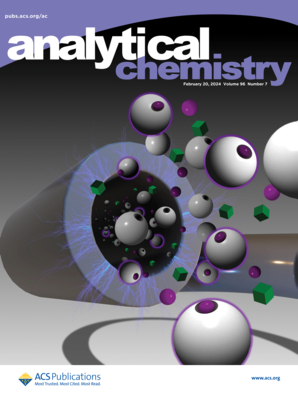Miniature Thermoelectric Cooler for Long-Term Stable Dehydration for On-Site Breath Analysis by Direct Inlet Photoionization Ion Mobility Spectrometry and Mass Spectrometry
IF 6.7
1区 化学
Q1 CHEMISTRY, ANALYTICAL
引用次数: 0
Abstract
Rapid and highly frequent measurements of exhaled breath hold significant value for disease diagnosis and exposure assessments. Direct inlet mass spectrometry and ion mobility spectrometry demonstrate great potential for on-site breath analysis, but their accuracy and sensitivity are notably affected by the high humidity in the breath samples. A miniature and continuous dehydration device based on dual-switching thermoelectric cold traps has been developed to efficiently reduce the humidity of breath gas from saturation to relative humidity of 4.3%, and a subcooling compensation method was adopted to eliminate the humidity fluctuations when switching the two cold traps to remove the condensed water in the trap, which could achieve a stable outlet humidity with RSD of 8.2% regardless of inlet humidity variations. The performance and profits of the miniature dehydration device for on-site analysis of breath samples have been tested by coupling with direct inlet photoionization ion mobility spectrometry and time-of-flight mass spectrometry. Trace breath acetone could be directly measured, and its concentration profiles over an 8 h period in fasting volunteers could be continuously monitored every 30 s. Furthermore, the m/z peaks from chlorinated hydrocarbons in exhaled breath samples were clearly identified after passing the dehydration device, which can be used for an occupational health assessment of the widely used halocarbon solvents.

求助全文
约1分钟内获得全文
求助全文
来源期刊

Analytical Chemistry
化学-分析化学
CiteScore
12.10
自引率
12.20%
发文量
1949
审稿时长
1.4 months
期刊介绍:
Analytical Chemistry, a peer-reviewed research journal, focuses on disseminating new and original knowledge across all branches of analytical chemistry. Fundamental articles may explore general principles of chemical measurement science and need not directly address existing or potential analytical methodology. They can be entirely theoretical or report experimental results. Contributions may cover various phases of analytical operations, including sampling, bioanalysis, electrochemistry, mass spectrometry, microscale and nanoscale systems, environmental analysis, separations, spectroscopy, chemical reactions and selectivity, instrumentation, imaging, surface analysis, and data processing. Papers discussing known analytical methods should present a significant, original application of the method, a notable improvement, or results on an important analyte.
 求助内容:
求助内容: 应助结果提醒方式:
应助结果提醒方式:


